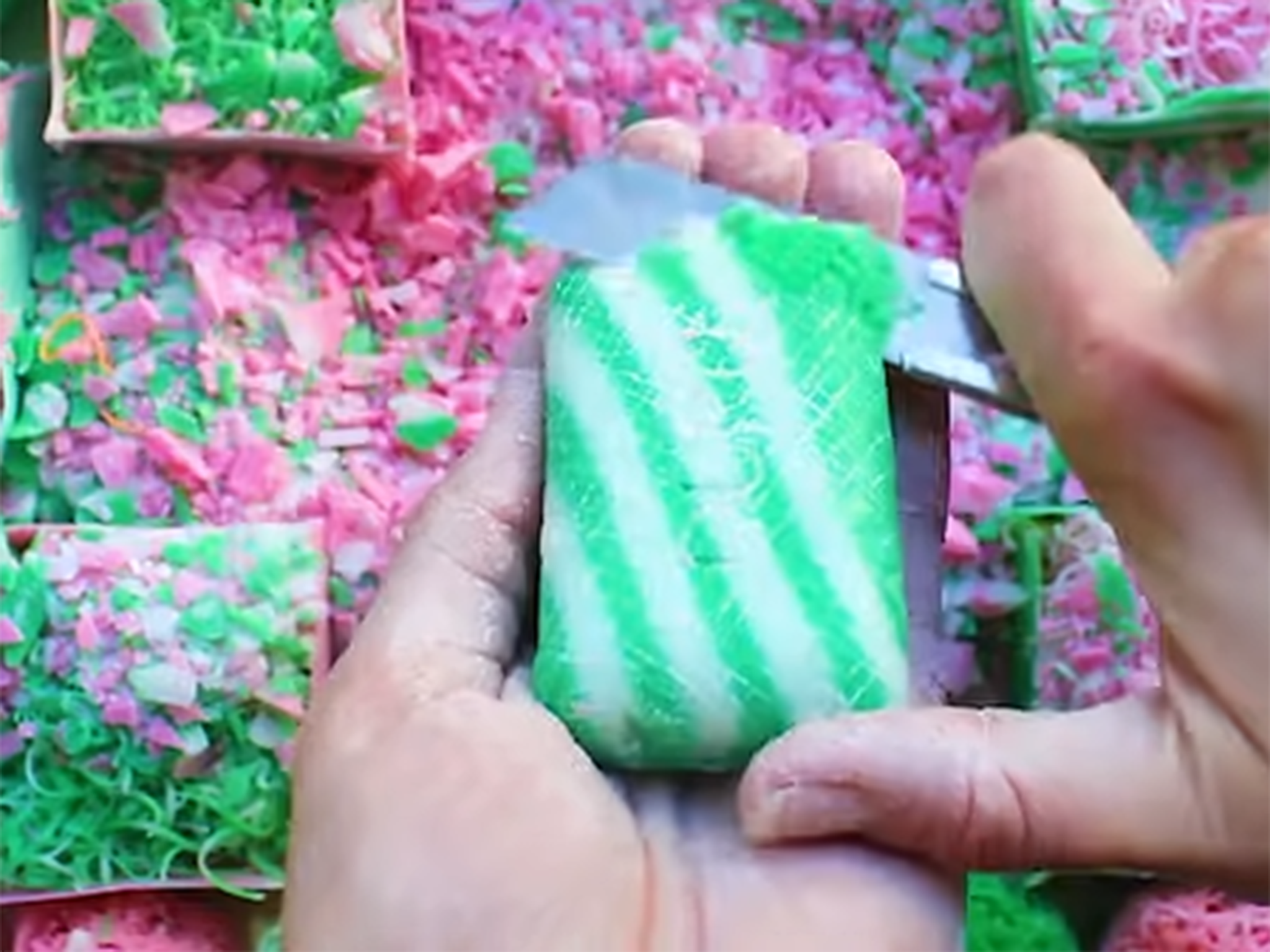The Independent's journalism is supported by our readers. When you purchase through links on our site, we may earn commission.
I enjoy ASMR TikToks, but are they contributing to the climate crisis?
When I started to research the resources that go into making ASMR videos, I couldn’t help but feel that it was all a bit wasteful


A world of digital delights can be found on TikTok, from comedy skits and dancing trends, to socio-political commentary and even people who cut soap for you as you fall asleep. If you’ve never heard of that last one, then you are one of the few who have yet to be consumed by the experience of autonomous sensory meridian response, or ASMR.
People who watch or listen to the content engineered to arouse ASMR will usually experience pleasant sensations, such as a tingling of the skin, that might begin on the scalp and move down the body. This content is designed to produce a relaxing effect, helping people to feel calm and safe.
The term “ASMR” has been around since 2010, coined by Jennifer Allen, although it is thought that ASMR-seeking enthusiasts have been enjoying its effects long before this. The most interesting thing about ASMR videos is the breadth of content they cover, including the chewing noises from food mukbangs, breadface smashing, sponge squeezing and soap cutting.
TikTok videos have redefined the purpose of ASMR, which was originally to trigger that “tingling” sensation in the brain. Now, videos are typically very short to be more compatible with the platform. Many are now made without any sort of sound equipment, putting a new emphasis on the visual aspect of the experience. Celebrities are making their own ASMR videos, some to promote their products. Even big brands are deploying ASMR as a marketing and advertising tool, such asIkea and Dove.
I’ll admit, I have overindulged in these videos and, true to their purpose, they do help me decompress and sometimes even help with my insomnia. Recently, however, I haven’t been able to stop questioning whether they are completely harmless. When I started to research the resources that go into making them, I couldn’t help but feel that it was all a bit wasteful.
I found myself asking: What happens to all that soap? Where does it go when the “cutters’’ are finished with it? Aren’t we just encouraging more waste in a society that’s already incredibly wasteful?
It seems that I’m not the only one questioning the ethics of ASMR videos. In 2020, China clamped down on “eating influencers” by making food mukbangs, a type of content that originated in Korea, illegal. This move was made as part of the Clean Plate campaign, to ensure food wastage was kept to a minimum in China, amid growing concerns over food security due to global supply chain shortages caused by the Covid-19 pandemic.
To keep up to speed with all the latest opinions and comment, sign up to our free weekly Voices Dispatches newsletter by clicking here
In addition to this, some soap-cutting stars now reuse their cuttings and recycle them into new bars of soap. However, many ASMR videos use non-recyclable materials, such as sponges or floral floam, which present a new set of environmental challenges.
Those who benefit from wonderfully bizarre ASMR videos do not seem deterred by the waste that occurs as a result of them and the potential environmental harm they are causing. The biggest contributors to the climate crisis are large corporations, but it’s ironic that while ASMR videos are being used as coping mechanisms to distract us momentarily from the world, our appetite for them is perhaps fuelling wasteful practices that contribute to the serious problems humanity is facing.
Beauty Dhlamini is a global health scholar with a focus on health inequalities, and co-hosts the podcast Mind the Health Gap
Join our commenting forum
Join thought-provoking conversations, follow other Independent readers and see their replies
Comments
Bookmark popover
Removed from bookmarks